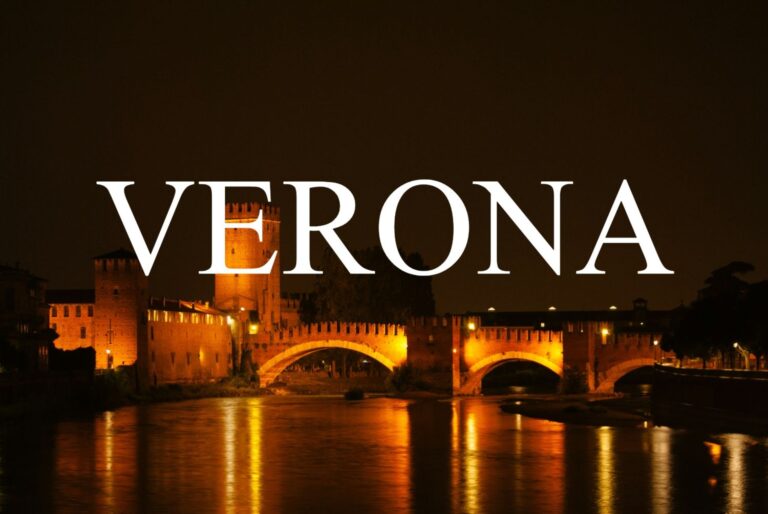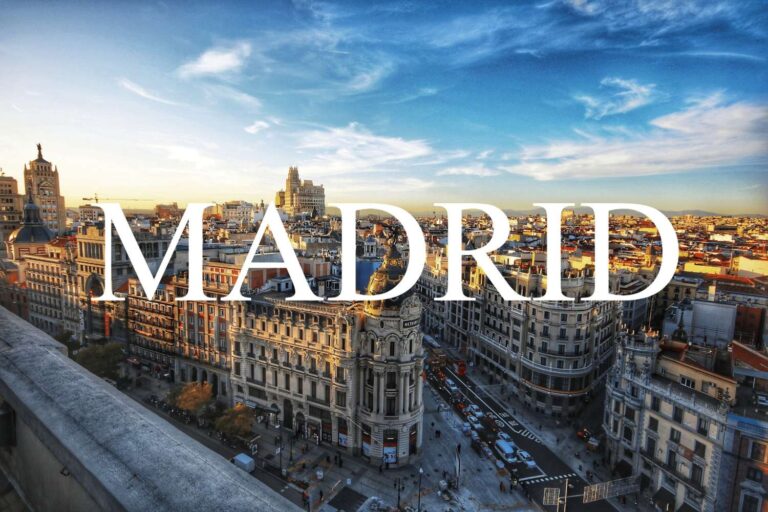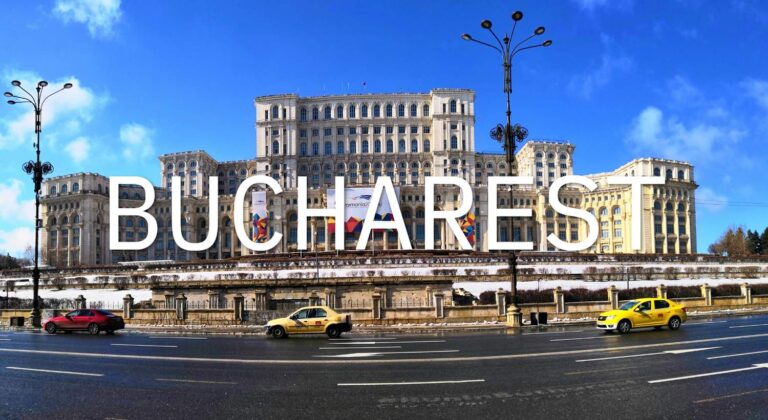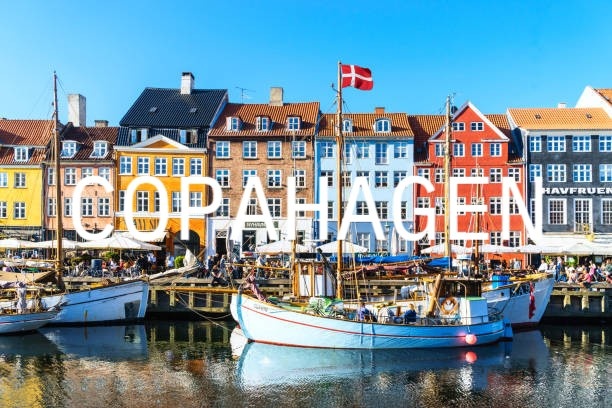
Copenhagen, the vibrant capital of Denmark, effortlessly combines rich history, cutting-edge design, and a deep commitment to sustainability. Famous for its scenic canals, expansive green parks, and welcoming, eco-conscious locals, Copenhagen is an ideal city for exploring by foot or bike. Its charming streets are dotted with cozy cafés, world-class museums, and innovative restaurants that showcase the best of Nordic cuisine.
Whether you’re passionate about history and architecture, fascinated by contemporary art and design, or simply eager to soak up the lively atmosphere of bustling neighborhoods like Nyhavn and Vesterbro, Copenhagen offers a diverse array of experiences for every traveler. From the grandeur of Rosenborg Castle to the creative buzz of the Copenhagen Street Food Market, the city invites you to dive into its unique blend of tradition and modernity.
In this comprehensive guide, we’ll take you through the best places to visit in Copenhagen, share insider tips on the ideal time to plan your trip, and provide essential travel advice to make your visit unforgettable.
Best Time to Visit Copenhagen
Copenhagen is a city that can be visited year-round, but the best time to visit depends on your personal preferences and what kind of experience you’re seeking.
Spring (April to June)
Spring is one of the most pleasant times to visit Copenhagen. The weather starts warming up, flowers begin to bloom, and outdoor cafes open up. Temperatures range from 8°C to 16°C (46°F to 61°F), making it perfect for exploring the city’s parks and canals.
Insider Tip: If you’re visiting in late May or early June, you’ll get to enjoy the city at its best without the peak-season crowds.
Summer (July to August)
Summer is the peak tourist season in Copenhagen, with temperatures reaching 16°C to 22°C (61°F to 72°F). The days are long, with up to 17 hours of daylight, giving you plenty of time to explore. The city comes alive with festivals, outdoor concerts, and an abundance of outdoor events.
Insider Tip: Book accommodations and attractions in advance, as this is the busiest time of the year.
Autumn (September to November)
Autumn offers a beautiful mix of pleasant temperatures and fewer tourists. The weather can range from 11°C to 18°C (52°F to 64°F), and the fall foliage in the parks and gardens is gorgeous. Copenhagen becomes a little quieter, making it a great time to explore without the crowds.
Insider Tip: September and October are particularly wonderful for enjoying the city’s food scene and outdoor activities.
Winter (December to February)
Winter in Copenhagen is cold but magical, with festive Christmas markets, cozy cafes, and snow-dusted streets. Temperatures drop to 0°C to 5°C (32°F to 41°F), and the city takes on a fairytale-like atmosphere. While it’s chilly, it’s also a great time to experience the holiday spirit in Denmark.
Insider Tip: The Tivoli Gardens Christmas market is a must-see for anyone visiting in December.
Currency in Copenhagen
Denmark’s official currency is the Danish Krone (DKK). Here are some important currency tips for your trip:
Currency Exchange
- ATMs: Widely available across Copenhagen, especially in tourist areas like Nyhavn and Tivoli Gardens.
- Credit Cards: Visa, Mastercard, and American Express are accepted at most hotels, restaurants, and shops.
- Cash: Denmark is a very card-friendly country, and many places don’t require cash. However, it’s still a good idea to carry a small amount of cash for smaller transactions or in more remote areas.
Best Places to Visit in Copenhagen
Tivoli Gardens

Located in the heart of Copenhagen, Tivoli Gardens is one of the world’s oldest and most beloved amusement parks, offering a perfect blend of thrilling rides, beautiful gardens, delicious food, and magical ambiance. Since its opening in 1843, Tivoli has been a central part of Copenhagen’s cultural and social life, attracting visitors from around the world who come to experience its charming atmosphere and historical significance.
🌟 Highlights of Tivoli Gardens
🎠 Iconic Rides & Attractions
Tivoli Gardens is home to a range of rides that cater to all ages and tastes. Whether you’re seeking an adrenaline rush or a peaceful journey through the park, there’s something for everyone:
- Rutschebanen: One of the world’s oldest wooden roller coasters, built in 1914, it’s still thrilling visitors with its classic design and speed.
- Star Flyer: If you’re a fan of heights, the Star Flyer offers stunning panoramic views of Copenhagen from 80 meters above the ground.
- The Demon: A modern steel roller coaster with loops, twists, and plenty of thrills, it’s perfect for thrill-seekers.
- Dragon Boat: For a more laid-back experience, the Dragon Boat ride takes you on a peaceful journey through Tivoli’s serene water features.
- Tivoli’s Pantomime Theatre: A beautiful outdoor stage where you can enjoy silent performances that are an essential part of Tivoli’s long history.
🌸 Beautiful Gardens
Tivoli isn’t just about rides; it’s also home to some of the most stunning gardens in Copenhagen. Whether you’re visiting in spring to see the flowers in full bloom, summer for lush greenery, or autumn for vibrant fall colors, Tivoli’s gardens offer a peaceful retreat:
- Ornamental Gardens: Explore the carefully curated gardens filled with flower beds, fountains, and neoclassical sculptures.
- Lake & Flowerbeds: The lake in Tivoli is surrounded by beautiful flowerbeds and offers a scenic area to relax and take in the peaceful ambiance.
🏰 Enchanting Atmosphere
Tivoli’s blend of historic charm and modern excitement creates a magical atmosphere. During the holiday season, Tivoli is transformed into a winter wonderland, with thousands of twinkling lights, Christmas markets, and festive decorations. The park’s fairy-tale vibes are enhanced by the music, lights, and decor throughout the year.
🎭 Cultural Events and Performances
Tivoli Gardens isn’t just a place for rides; it’s also a cultural hub offering a variety of performances, concerts, and events. From live music and dance performances to theatrical productions, there’s always something happening at Tivoli, making it the perfect place to experience Danish culture.
- Tivoli Concert Hall: Enjoy classical music, jazz concerts, and more in Tivoli’s state-of-the-art concert venue.
- Tivoli Gardens Pantomime Theatre: Watch charming performances that date back to the 19th century, often with no dialogue, only movement and music
🚗 How to Get There
- By Public Transport:
Tivoli Gardens is located in the city center of Copenhagen, and is easily accessible by public transportation:- Train: The Copenhagen Central Station (Hovedbanegården) is just 5 minutes walking distance from Tivoli Gardens.
- Metro: The Rådhuspladsen Metro Station is also within walking distance of Tivoli.
- Bus: Several buses, including the 2A, 5C, and 26, stop near Tivoli Gardens.
- By Bike:
Copenhagen is a bike-friendly city, and you can easily reach Tivoli Gardens by bike. The park is located near major cycling paths, and bike racks are available near the entrance. - On Foot:
Tivoli is centrally located and is a short walk from other major landmarks like City Hall Square, Strøget (Copenhagen’s main shopping street), and Rådhuspladsen.
🕒 Visitor Information
- Opening Hours:
Tivoli Gardens is generally open year-round, but its operating hours vary depending on the season. The park is open daily from 10:00 AM to 11:00 PM, but rides typically start operating later in the day (around 11:00 AM).- Spring & Summer: Tivoli is open during the daytime and evening hours, and it’s at its most vibrant with live performances, outdoor concerts, and all rides in full operation.
- Autumn & Winter: The park is beautifully decorated with seasonal themes, and many events are centered around Christmas markets and festive displays.
- Food & Dining:
Tivoli offers a variety of dining options, from casual eateries to fine dining restaurants. You can enjoy everything from Danish pastries and street food to gourmet meals at places like Nimb Restaurant, which offers a luxurious dining experience within the park.
💡 Travel Tips
- 🎢 Best Time to Visit:
Tivoli Gardens is magical year-round, but if you’re after a lively atmosphere with all rides operational, summer and spring are the best times to visit. If you’re looking for a more festive vibe, consider visiting during the Christmas season when the park is adorned with beautiful holiday decorations. - 👟 Wear Comfortable Shoes:
You’ll be walking around a lot, so make sure to wear comfortable shoes. If you plan to try the rides, be sure to wear something you can comfortably move around in. - 🎟️ Buy Tickets in Advance:
To avoid long lines, consider purchasing your tickets online in advance. There are also discounts available if you buy tickets ahead of time or for family packages. - 📸 Bring Your Camera:
Tivoli Gardens is an incredibly photogenic place, whether you’re capturing the historic architecture, vibrant gardens, or magical evening lights. Don’t forget to bring your camera or smartphone!
Tivoli Gardens is more than just an amusement park; it’s a historical treasure and a cultural hub that offers something for everyone. Whether you’re seeking the thrill of rides, the serenity of gardens, or a unique cultural experience, Tivoli has it all. Its blend of old-world charm and modern-day attractions makes it one of the most magical places to visit in Copenhagen.
Nyhavn
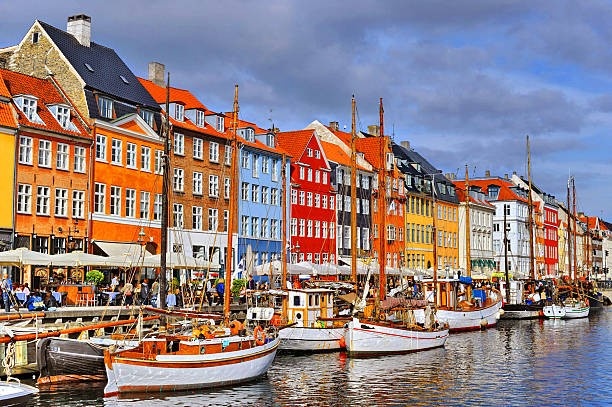
Located in the heart of Copenhagen, Nyhavn (which translates to “New Harbor”) is a vibrant and picturesque canal-side district, known for its historic charm, colorful buildings, and lively atmosphere. Originally a bustling port for trade and transport, Nyhavn has transformed into one of the city’s most beloved areas, attracting both locals and tourists alike with its mix of history, culture, and modern-day leisure.
🌟 Highlights of Nyhavn
• 🎨 Colorful Facades:
One of the most recognizable features of Nyhavn is its row of colorful 17th- and 18th-century townhouses lining the harbor. These charming buildings, painted in hues of red, yellow, and blue, create an instantly recognizable skyline that makes Nyhavn one of the most photographed spots in Copenhagen.
• 🚤 Canal Boat Tours:
A visit to Nyhavn isn’t complete without hopping on a canal boat tour. These guided tours provide a unique view of the city’s waterfront and offer insight into the history of Copenhagen’s canals. As you cruise through the canals, you’ll pass by iconic sites such as the Opera House, Amalienborg Palace, and the Little Mermaid statue.
• 🍽️ Dining and Cafes:
The area around Nyhavn is dotted with a variety of restaurants, cafes, and bars, many of which offer stunning views of the canal. Whether you’re craving traditional Danish smørrebrød (open-faced sandwiches), fresh seafood, or a cold beer, you’ll find plenty of options to suit your tastes. Enjoying a meal or drink by the water with the colorful buildings in the backdrop is a quintessential Copenhagen experience.
• 🎭 Historic Significance:
Historically, Nyhavn was a hub of entertainment and social life, known for its lively taverns and being a popular spot for artists, writers, and sailors. Famous Danish author Hans Christian Andersen even lived at No. 20 for several years. Today, the area retains much of its charm and history, with art galleries and historical plaques celebrating its cultural significance.
• 🎉 Lively Atmosphere:
Whether it’s sunny or overcast, Nyhavn has a lively, festive vibe year-round. In the warmer months, people flock to the outdoor cafes and bars to soak in the sun, while in winter, the atmosphere is cozy and inviting, especially with the Christmas markets that pop up during the holiday season.
🚶 How to Get There
• By Public Transport:
The easiest way to get to Nyhavn is via Copenhagen’s Metro system. The nearest station is Kongens Nytorv (Line M1 and M2), just a short walk from the harbor. Alternatively, the bus system also connects Nyhavn to other key areas in the city.
• On Foot:
If you’re staying in central Copenhagen, Nyhavn is easily walkable. It’s just a short stroll from popular areas like Strøget (the pedestrian shopping street) and Amalienborg Palace.
• By Bike:
Copenhagen is known for being a bike-friendly city, and you can easily rent a bike to reach Nyhavn from virtually any point in the city. The bike lanes are extensive, and cycling is a fast and scenic way to travel.
🕒 Visitor Information
• Opening Hours:
Since Nyhavn is an outdoor area, it’s accessible at all hours of the day, though the majority of cafes and restaurants open around 10:00 AM and close by 11:00 PM or later, especially in the summer months. The canal boat tours typically run from morning until late afternoon.
• Time to Explore:
It’s easy to spend anywhere from 1-2 hours in Nyhavn—whether you’re strolling along the harbor, enjoying a meal, or taking a boat tour. If you’re planning to explore nearby attractions like Christiansborg Palace or Tivoli Gardens, consider spending a half-day in the area.
💡 Travel Tips
• ☀️ Best Time to Visit:
Nyhavn is particularly popular in the summer when the weather is warm, and the outdoor seating along the canals is bustling with activity. However, it’s also a charming spot in winter, especially when the area is lit up for the Christmas season. If you prefer fewer crowds, visit early in the morning or during the shoulder seasons (spring and fall).
• 💳 What to Bring:
Don’t forget your camera—Nyhavn’s photogenic scenery is perfect for snapshots. Also, bring a light jacket or sunscreen depending on the weather, as the wind can be chilly near the water, especially in the evening.
• 🍴 Try Local Dishes:
While you’re in Nyhavn, be sure to try Danish specialties like smørrebrød (open-faced sandwiches), pickled herring, and fresh seafood dishes. You can also enjoy a Danish hot dog from a street vendor if you’re looking for a quick snack.
• 💰 Prices in Nyhavn:
Although Nyhavn is a popular tourist spot, it can be a bit pricier compared to other parts of Copenhagen. Expect to pay higher prices for drinks and meals at the waterfront cafes. If you’re on a budget, consider walking a little further to find more affordable dining options.
Nyhavn is a quintessential Copenhagen experience—a charming, historic area with plenty to offer. Whether you’re strolling along the colorful waterfront, enjoying a relaxing boat ride, or savoring delicious Danish cuisine in one of the many cafes, Nyhavn provides a vibrant atmosphere and a taste of both the past and present of Copenhagen. Whether you’re visiting for the first time or returning for another trip, Nyhavn is an iconic spot that truly captures the heart of Denmark’s capital.
The Little Mermaid Statue
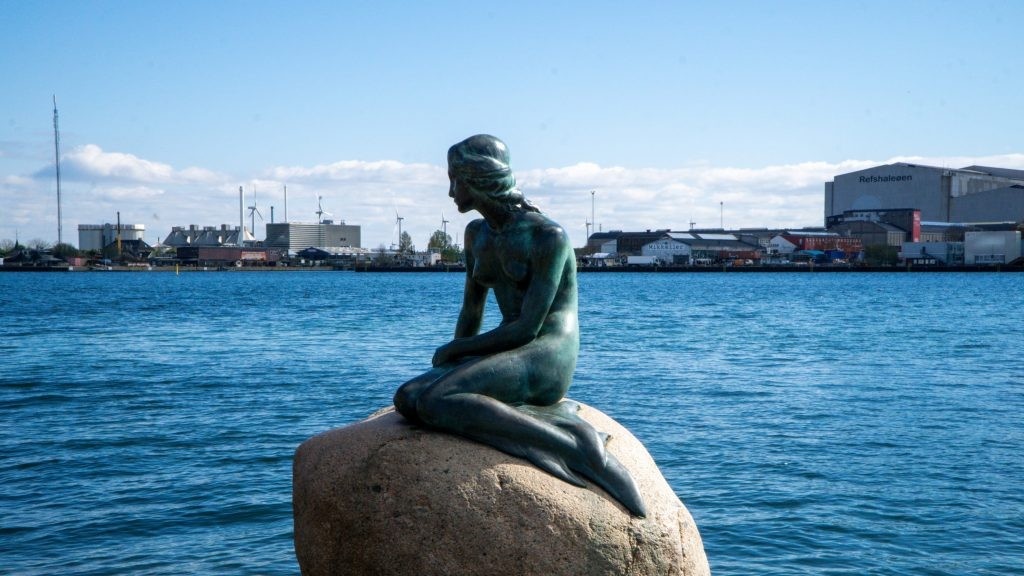
Perched on a rock along the Langelinie Promenade, The Little Mermaid Statue is one of Copenhagen’s most famous and photographed landmarks. Inspired by the beloved fairy tale written by Danish author Hans Christian Andersen, the statue captures the quiet melancholy and timeless beauty of the mermaid who gave up everything for love.
🌟 Highlights of The Little Mermaid
• 📖 Literary Legacy:
The statue is based on Andersen’s 1837 fairy tale, which tells the story of a mermaid who longs to become human to be with the prince she loves. Unlike the Disney adaptation, the original story is poignant and bittersweet, and the statue reflects this tone with its simple, contemplative pose.
• 🎨 A Work of Art:
Commissioned in 1909 by brewer Carl Jacobsen (of Carlsberg fame), the bronze statue was sculpted by Edvard Eriksen and unveiled in 1913. It stands just 1.25 meters (4.1 ft) tall, making it more modest in size than many expect, but no less iconic.
• 🌊 Waterfront Setting:
Set at the edge of the harbor on a cluster of stones, The Little Mermaid offers a peaceful spot with views of the water and the passing boats. The surrounding Langelinie Promenade is ideal for a scenic stroll or bike ride along the coast.
• 🧭 Symbol of Copenhagen:
Though small in stature, the statue has become a global emblem of Denmark and its capital city. It represents both the artistic heritage and maritime culture that define Copenhagen.
• 🗿 A Resilient Monument:
Over the years, the statue has endured numerous acts of vandalism and political statements, including being decapitated and painted. Each time, it has been carefully restored, symbolizing resilience and enduring cultural value.
🚶 How to Get There
• By Public Transport:
Take the Metro to Østerport Station, then walk approximately 15 minutes along the harbor to reach the statue. Bus routes like 26 also stop near the Langelinie area.
• On Foot or By Bike:
From central locations like Nyhavn or Amalienborg Palace, The Little Mermaid is a pleasant 20-30 minute walk or a 10-minute bike ride along the harbor promenade.
• By Boat Tour:
Some canal and harbor tours include a stop or view of The Little Mermaid from the water—great for photography.
🕒 Visitor Information
• Opening Hours:
The statue is located outdoors and is accessible 24/7, free of charge. It’s especially beautiful at sunrise and during the golden hour before sunset.
• Admission Fee:
Free – there is no entry ticket or fee required.
• Time to Explore:
You can visit The Little Mermaid in about 15–30 minutes, or longer if you’re walking along Langelinie Pier or enjoying nearby attractions.
💡 Travel Tips
• 📸 Manage Expectations:
The statue is smaller than most tourists expect. Go for the experience and symbolism, not the scale. Early morning or late evening visits help avoid crowds.
• 🎒 Pack Light:
There’s no place to leave bags nearby, and the area is open-air. Bring only what you need, especially if you’re biking or walking from other parts of the city.
• 🌬️ Weather Watch:
Being on the waterfront, it can be breezy and cool—even in summer. Dress accordingly, especially if you plan to sit by the water or walk the promenade.
• 🧭 Combine with Nearby Sights:
Make your trip worthwhile by combining your visit with a walk through Kastellet Fortress, Amalienborg Palace, or Gefion Fountain, all within easy walking distance.
Though small in size, The Little Mermaid Statue holds a giant place in Copenhagen’s cultural and historical heart. Whether you’re a fan of Hans Christian Andersen, a lover of quiet symbolism, or just exploring the city’s harborfront, this graceful sculpture is a must-see. With its rich literary roots and scenic setting, it offers a moment of reflection amid the hustle of sightseeing—a poetic pause in your Copenhagen adventure.
Amalienborg Palace

Located in central Copenhagen, Amalienborg Palace is the official residence of the Danish royal family and a masterpiece of Rococo architecture. Set around a grand octagonal courtyard, it consists of four nearly identical palaces, each with historical significance and royal grandeur. The palace complex is not only a functioning royal residence but also a popular attraction showcasing Denmark’s monarchical heritage.
🌟 Highlights of Amalienborg Palace
• 🏛️ Royal Architecture:
Amalienborg is composed of four elegant 18th-century palaces arranged around a cobbled courtyard. Their symmetrical facades and classic Rococo style are a testament to Denmark’s architectural legacy. At the center stands an equestrian statue of King Frederick V, the founder of the palace complex, created by French sculptor Jacques-François-Joseph Saly.
• 🫅 Changing of the Royal Guard:
One of the most popular daily spectacles at Amalienborg is the Changing of the Guard, which takes place at noon when the royal family is in residence. The guards, dressed in bearskin hats and blue uniforms, march from Rosenborg Castle to Amalienborg, accompanied by music if the monarch is present.
• 🏰 Amalienborg Museum:
Housed in Christian VIII’s Palace, the museum offers a fascinating look into the lives of Denmark’s monarchs over the last 150 years. Visitors can explore period-furnished rooms, royal portraits, and personal artifacts that bring the monarchy’s modern history to life.
• 🪞 Royal Residences:
Each of the four palaces has its own identity and residents:
- Christian VII’s Palace – used for official functions
- Christian VIII’s Palace – houses the museum
- Frederik VIII’s Palace – home to Crown Prince Frederik and his family
- Christian IX’s Palace – residence of Queen Margrethe II (as of 2024)
• 🏙️ Location and Surroundings:
Amalienborg is part of the Frederiksstaden district, a historic area designed to celebrate the 300th anniversary of the House of Oldenburg. Directly across the palace square, you’ll find the Marble Church (Frederik’s Church), known for its grand dome—one of the largest in Scandinavia.
🚶 How to Get There
• By Public Transport:
Take the M1 or M2 Metro to Kongens Nytorv, then walk 10 minutes to the palace. Bus routes 1A, 23, and 26 also stop nearby.
• On Foot:
Amalienborg is centrally located and easily walkable from major areas like Nyhavn, Strøget, and Christiansborg Palace.
• By Bike:
Copenhagen’s extensive bike lanes make it easy to cycle to Amalienborg. Bike parking is available near the palace square.
🕒 Visitor Information
• Palace Square:
The courtyard is open to the public 24/7. It’s a popular spot for photos and watching the Changing of the Guard.
• Museum Opening Hours:
Typically open from 10:00 AM to 5:00 PM (closed on some Mondays and holidays – check in advance).
• Admission:
Tickets to the Amalienborg Museum cost around DKK 120 for adults, with discounts for students, children, and seniors. Combo tickets with Rosenborg Castle are often available.
• Time to Explore:
Plan to spend 1 to 2 hours at the museum and palace square, more if you’re visiting nearby attractions or attending the guard ceremony.
💡 Travel Tips
• 📸 Best Time for Photos:
Morning light offers the best conditions for photography, especially if you want to capture the palace with fewer crowds.
• 🧥 What to Wear:
The palace square is exposed to the elements. Bring a jacket, especially during windy or cooler months.
• 🗣️ Take a Guided Tour:
To get the most out of the museum experience, consider joining a guided tour (available in English and Danish) for deeper insight into royal history.
• 📚 Learn About the Royals:
Familiarize yourself with Denmark’s current monarchy—it will add context and meaning to the museum exhibits and guard ceremony.
• 🎟️ Book in Advance (Summer):
During peak tourist season, it’s best to book museum tickets and guided tours ahead of time.
Amalienborg Palace is a must-see for anyone visiting Copenhagen. With its regal architecture, rich history, and living traditions, it offers a unique glimpse into Denmark’s royal culture. Whether you’re admiring the palace exteriors, witnessing the changing of the guard, or stepping inside the museum’s elegant halls, Amalienborg captures the grace and continuity of the Danish monarchy in a way that’s both accessible and memorable.
Christiansborg Palace
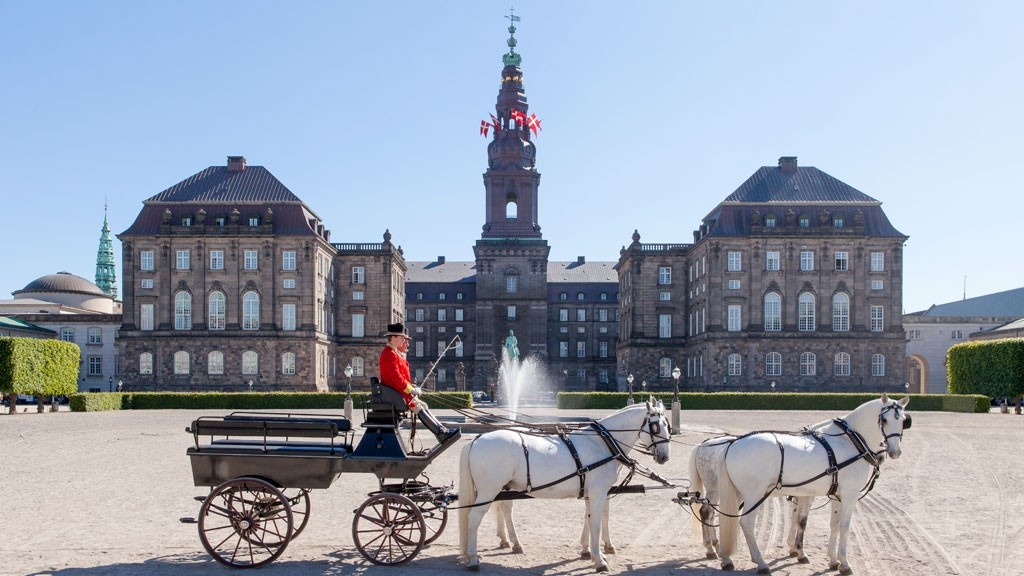
Located on the small island of Slotsholmen in central Copenhagen, Christiansborg Palace is one of Denmark’s most iconic landmarks. It’s the only building in the world that houses all three branches of a country’s government: the Danish Parliament (Folketinget), the Supreme Court, and the Prime Minister’s Office. Once a royal residence and still partially used by the monarchy today, the palace blends rich history with active political life—making it a must-see for travelers interested in culture, architecture, and governance.
🌟 Highlights of Christiansborg Palace
• 👑 The Royal Reception Rooms:
Step into the ceremonial heart of the Danish monarchy with a visit to the lavish Royal Reception Rooms. Still used by the Queen for state events, these rooms include the Throne Room, The Great Hall, and The Queen’s Library, all decorated with grand chandeliers, gold accents, and centuries-old furniture.
• 🧵 The Queen’s Tapestries:
Inside the Great Hall, you’ll find 17 vibrant tapestries gifted to Queen Margrethe II in 2000. They vividly illustrate Denmark’s history—from Viking warriors to modern democracy—and are a visual journey through 1,000 years of national milestones.
• 🐴 The Royal Stables:
At the rear of the palace, you can visit the historic Royal Stables, which date back to the 18th century. Meet the royal horses (often white Kladrubers) and admire antique carriages and saddles in the old baroque riding hall.
• 🧱 Ruins Beneath the Palace:
Beneath Christiansborg lie the ruins of earlier castles, including the 12th-century fortress of Bishop Absalon. Walking through these archaeological remains offers a unique glimpse into medieval Copenhagen.
• 🏛️ Danish Parliament (Folketinget):
Take a guided tour of the working Parliament to learn how Danish laws are made. Visitors can explore the debating chamber, committee rooms, and learn about the country’s democratic traditions.
• 🌇 The Palace Tower:
Don’t miss a trip up to the Christiansborg Tower—at 106 meters, it’s the tallest tower in Copenhagen. The viewing platform offers breathtaking panoramic views of the city, and the best part? It’s free to access.
🚶 How to Get There
• By Public Transport:
Take the Metro Line M3 (Cityringen) to Gammel Strand or Kongens Nytorv—both are just a few minutes’ walk away. Several bus routes also serve the Slotsholmen area.
• On Foot:
Christiansborg Palace is centrally located and easily walkable from popular attractions like Strøget, Tivoli Gardens, and Nyhavn.
• By Bike:
Copenhagen is one of the most bike-friendly cities in the world. There are dedicated bike lanes leading directly to the palace, and plenty of bike racks nearby.
🕒 Visitor Information
• Opening Hours:
Typically open Tuesday to Sunday, from 10:00 AM to 5:00 PM. Some sections (like the Royal Stables or Parliament) may have varying schedules, so it’s best to check ahead.
• Time to Explore:
Plan for 2–3 hours if you’re visiting multiple areas of the palace. For a shorter visit—just the tower or a quick look inside—allocate about 30–45 minutes.
💡 Travel Tips
• 🌇 Visit the Tower First:
Start your trip with the free visit to the Palace Tower for a spectacular view of Copenhagen. Mornings are usually less crowded, and the light is perfect for photos.
• 🎟️ Use a Combination Ticket:
If you’re planning to explore more than one section of the palace, the combo ticket saves money and provides access to all the key attractions in one go.
• 📚 Join a Guided Tour:
For deeper insight into Danish history and politics, guided tours are available in both Danish and English—highly recommended for Parliament and the Royal Rooms.
• 👟 Wear Comfortable Shoes:
The palace grounds are expansive, and you’ll be walking across cobblestones, grand halls, and underground ruins.
• 📸 Photography Tips:
You can take photos in most areas, but flash and tripods are usually not allowed indoors. Don’t forget to capture the stunning view from the tower!
Whether you’re drawn to grand architecture, curious about modern democracy, or fascinated by centuries of royal history, Christiansborg Palace is one of Copenhagen’s most captivating landmarks. It’s a place where the past and present live side by side—from opulent throne rooms to the halls of political power. Don’t miss the chance to experience this unique fusion of culture, royalty, and governance during your visit to Denmark’s capital.
Rosenborg Castle
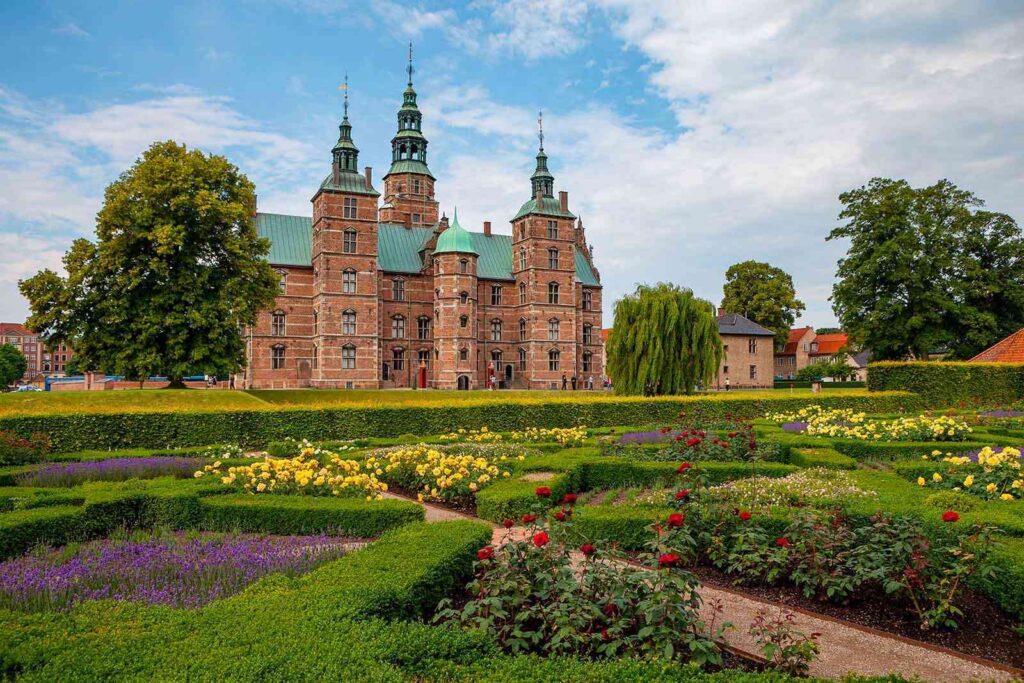
Tucked away in the lush greenery of King’s Garden (Kongens Have), Rosenborg Castle is a stunning Renaissance-era palace that looks like it’s been lifted straight from a storybook. Built in the early 1600s by King Christian IV, this fairytale castle offers a glimpse into Denmark’s royal past—complete with crown jewels, opulent interiors, and royal artifacts. It’s one of Copenhagen’s most beloved attractions and a must-visit for history buffs, art lovers, and romantics alike.
🌟 Highlights of Rosenborg Castle
• 💎 The Crown Jewels and Royal Regalia:
Descend into the castle’s basement vaults to see the dazzling Danish Crown Jewels, including crowns, scepters, and orbs used by past monarchs. These priceless items are still part of the official royal regalia and are securely displayed in beautifully lit glass cases.
• 🪑 Lavish Royal Rooms:
Explore room after room of ornately decorated halls, filled with antique furniture, tapestries, and portraits. Don’t miss the Knight’s Hall, where you’ll find the coronation thrones flanked by three silver lions—a symbol of power and protection.
• 🧭 Royal Collections:
From royal portraits to rare Venetian glass, Rosenborg is home to centuries of Danish art and treasures. Among the most unique pieces are the personal effects of King Christian IV, including his blood-stained clothes from a battle injury.
• 🌷 The King’s Garden (Kongens Have):
Surrounding the castle is Denmark’s oldest royal garden, a peaceful public park popular with locals and visitors alike. It’s the perfect place for a picnic, a stroll, or simply relaxing in the shade of a tree with the castle as your backdrop.
• 📜 A Journey Through Danish History:
Rosenborg Castle is more than just a pretty building—it’s a journey through 400 years of Danish monarchy. Each room is thoughtfully curated to tell the story of Denmark’s kings and queens, from Renaissance splendor to Enlightenment elegance.
🚶 How to Get There
• By Public Transport:
Take the Metro (M3 Cityringen) to Nørreport Station, which is just a 5-minute walk from the castle. Buses and S-trains also serve the area.
• On Foot:
Rosenborg Castle is located in the city center, close to attractions like Strøget, Torvehallerne food market, and Botanical Garden—all within easy walking distance.
• By Bike:
Copenhagen’s bike lanes make it easy to cycle to Rosenborg from anywhere in the city. Bike racks are available near the entrance to the garden.
🕒 Visitor Information
• Opening Hours:
- Typically open daily from 10:00 AM to 5:00 PM (last admission around 4:30 PM)
- Closed on certain holidays; check in advance if visiting during winter months
• Time to Explore:
Plan for around 1.5 to 2 hours to tour the castle and treasury, plus extra time if you want to stroll through the gardens or relax nearby.
💡 Travel Tips
• 📷 Photography Rules:
Photos are allowed in most areas, but no flash or tripods. The Knight’s Hall and treasury make for especially memorable shots.
• 👑 Visit Early or Late:
Rosenborg can get busy, especially in summer and on weekends. Visiting early in the morning or after 3 PM can help you avoid the crowds.
• 🌸 Picnic in the Garden:
Bring snacks or grab something from the nearby Torvehallerne market and enjoy a picnic in King’s Garden—especially beautiful during spring and summer blooms.
• 🎧 Use the Audio Guide:
Enhance your visit by using the official app or audio guide (available in English and Danish). It adds fascinating context to each exhibit.
• 🧥 Layer Up:
Even in summer, the basement treasury can be cool. Bring a light jacket if you’re sensitive to chilly indoor temperatures.
With its majestic towers, royal artifacts, and fairytale setting, Rosenborg Castle is one of the most enchanting places to visit in Copenhagen. Whether you’re exploring the crown jewels, wandering the regal halls, or simply enjoying a sunny afternoon in King’s Garden, Rosenborg is a perfect blend of history, beauty, and culture. A visit here offers a deeper understanding of Denmark’s royal heritage—and plenty of magical moments to remember.
Kongens Have (The King’s Garden)
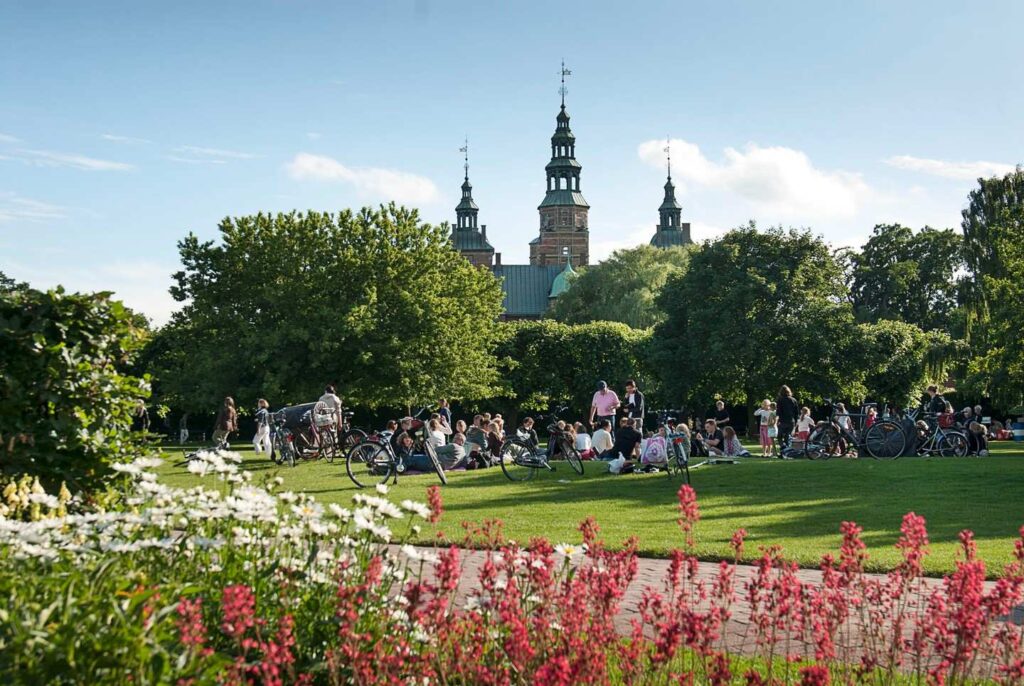
Tucked beside the majestic Rosenborg Castle, Kongens Have (The King’s Garden) is the oldest royal garden in Denmark and a tranquil escape in the heart of Copenhagen. Originally designed in the early 1600s for King Christian IV, the garden has transformed from a royal pleasure ground into a public park beloved by locals and visitors alike. With its symmetrical Renaissance layout, blooming flower beds, leafy avenues, and open lawns, Kongens Have is an inviting green space perfect for relaxation, recreation, or a romantic stroll.
🌟 Highlights of Kongens Have
• 🌼 Flower Gardens and Sculptures:
Kongens Have is famous for its beautifully manicured flowerbeds, especially during spring and summer when tulips, roses, and perennials burst into color. The park also features a number of elegant sculptures, including a statue of Hans Christian Andersen, Denmark’s beloved storyteller.
• 🏰 Views of Rosenborg Castle:
The garden offers some of the best views of Rosenborg Castle, with its fairytale towers peeking through the trees. It’s a perfect spot to photograph the castle from a romantic perspective or simply relax with the historic building as your backdrop.
• ☀️ Picnic Spots and Open Lawns:
Whether you’re traveling with family, friends, or solo, the garden’s expansive lawns provide the perfect place for a picnic or sunbathing. Locals often bring blankets, snacks, and books, making the most of Copenhagen’s mild summer days.
• 👧 Playgrounds and Family Areas:
Kongens Have is family-friendly, with two well-equipped playgrounds that are safe and fun for children. There’s plenty of shade and seating for parents, making it an ideal break during your sightseeing adventures.
• 🎭 Open-Air Events and Performances:
In summer, the garden comes alive with free open-air concerts, puppet shows, and theatrical performances, including the popular Copenhagen Puppet Festival. It’s a cultural bonus if you time your visit just right.
🚶 How to Get There
• By Public Transport:
Take the Metro Line M3 to Nørreport Station, just a 5-minute walk from the garden. Buses and S-trains also serve the nearby area.
• On Foot:
Centrally located, Kongens Have is easily accessible on foot from key sites like Strøget, Torvehallerne, and Christiansborg Palace.
• By Bike:
The park is bike-friendly, and while cycling is not allowed inside the garden, bike parking is available just outside the gates.
🕒 Visitor Information
• Opening Hours:
Kongens Have is typically open from 7:00 AM until 10:00 PM during spring and summer months. Winter hours are shorter (usually until sunset), and the gates close at night.
• Admission:
✅ Free Entry – As a public park, entry is completely free of charge.
• Best Time to Visit:
Late spring through early autumn is the best time to visit, when the gardens are in full bloom and the weather is perfect for lounging or exploring.
💡 Travel Tips
• 📸 Perfect for Photography:
Whether you’re into nature photography, castle backdrops, or candid street-style shots, Kongens Have is an Instagram-worthy haven, especially in golden hour light.
• 🧺 Pack a Picnic:
Grab some Danish pastries, smørrebrød, or street food from Torvehallerne food market and enjoy a relaxing meal on the lawn. It’s a classic Copenhagen experience.
• 🐝 Respect the Nature:
Stick to the designated paths and lawns. The park’s flowerbeds are carefully maintained and home to bees and butterflies.
• 🌂 Weather Watch:
Copenhagen weather can be changeable—bring a light rain jacket or umbrella just in case. There are some trees and covered benches for light shelter.
• 📚 Quiet Corners for Reading or Writing:
If you’re looking for a peaceful spot to read, write, or reflect, head to the shadier northern side of the garden, where foot traffic tends to be lighter.
Kongens Have is more than just a garden—it’s a living piece of Danish history and a cherished green space where locals and tourists gather to relax, recharge, and connect. Whether you’re stretching out on the lawn under the summer sun, admiring Rosenborg Castle, or simply enjoying a slow walk among the flowers, the King’s Garden offers a peaceful counterpoint to the buzz of Copenhagen. It’s a must-visit for anyone looking to enjoy the softer, more scenic side of the city.
National Museum of Denmark
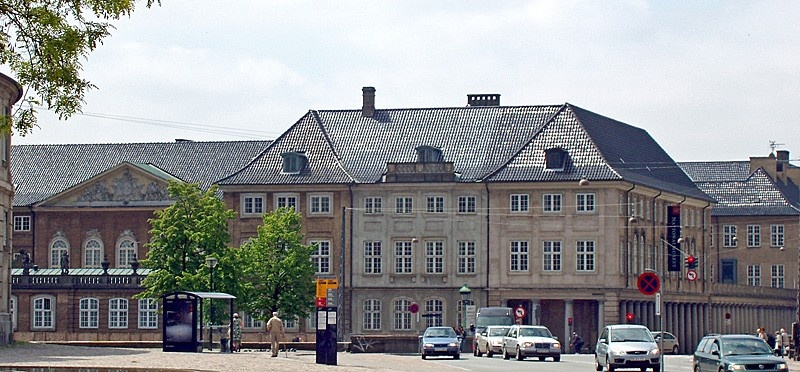
Located in the heart of Copenhagen, the National Museum of Denmark (Nationalmuseet) is the country’s largest and most comprehensive museum of cultural history. From Viking treasures and medieval armor to world cultures, prehistoric finds, and modern-day artifacts, this museum tells the story of Denmark—and the world—through rich, immersive exhibits. Whether you’re a history buff, a curious traveler, or visiting with family, this is one stop that promises depth, discovery, and inspiration.
🌟 Highlights of the National Museum
• ⚔️ Viking Age Exhibition:
Step into the world of fierce warriors, longships, and Norse mythology. The museum houses one of the world’s best Viking collections, including swords, helmets, runestones, and the famous Høvding burial—a high-status Viking chieftain grave.
• 🏺 Prehistoric Denmark:
Journey back thousands of years to see Bronze Age sun chariots, Stone Age tools, and even bog bodies preserved for millennia in Danish peat bogs. These eerily fascinating relics offer a rare glimpse into ancient lives.
• 🌍 Peoples of the World:
Travel beyond Denmark in the ethnographic collection, which features cultural artifacts from Africa, Asia, the Americas, and Oceania. It’s a celebration of global traditions, craftsmanship, and spiritual beliefs.
• 👑 Royal Danish History:
Learn about Denmark’s monarchs and noble life through period rooms, ornate furniture, royal portraits, and fashion. The museum’s elegant 18th-century ballroom also highlights the building’s original role as a royal residence.
• 👧 Children’s Museum:
Perfect for families, this interactive area lets kids dress as Vikings, climb aboard a ship, or pretend to live in an ancient village. Educational and entertaining, it’s one of Copenhagen’s best indoor activities for young travelers.
🚶 How to Get There
• By Public Transport:
Take the Metro (M3 or M4) to Gammel Strand or Rådhuspladsen stations. Both are within a short walking distance. Several bus lines also stop nearby.
• On Foot:
The museum is centrally located—just a few minutes’ walk from Strøget, Christiansborg Palace, and Nyhavn. It’s ideal to include in a downtown walking tour.
• By Bike:
There’s a bike-friendly path leading directly to the museum, and you’ll find plenty of bike racks right outside the entrance.
🕒 Visitor Information
• Time to Explore:
You can easily spend 2–3 hours here—longer if you’re interested in archaeology, ancient cultures, or want to dive deep into the exhibits.
💡 Travel Tips
• 🎧 Use the App or Audio Guide:
Available in English and Danish, the museum’s audio guide adds rich storytelling and historical insight to your visit. Download in advance or rent a device on-site.
• 📷 Photography Allowed:
Non-flash photography is permitted in most areas—perfect for capturing cool Viking gear or architectural details of the historic building.
• 🧥 Use the Lockers:
There are free lockers near the entrance for bags and coats, so you can explore hands-free and comfortably.
• ☕ Grab a Break at the Café:
The on-site café serves light meals, coffee, and cakes in a cozy courtyard setting—ideal for a break during your visit.
• 🛍️ Shop for Danish-Themed Gifts:
The museum shop has high-quality souvenirs, books, Viking replicas, and design items—great for thoughtful gifts or keepsakes.
The National Museum of Denmark is more than just a museum—it’s a time machine that takes you from the Viking Age to modern-day Denmark, with a few global stops along the way. Richly curated and welcoming to all ages, it’s an essential part of understanding the heart and history of the Danish people. Whether you’re spending a rainy day indoors or planning a cultural deep-dive, this museum is an unforgettable Copenhagen experience that educates, entertains, and inspires.
Freetown Christiania
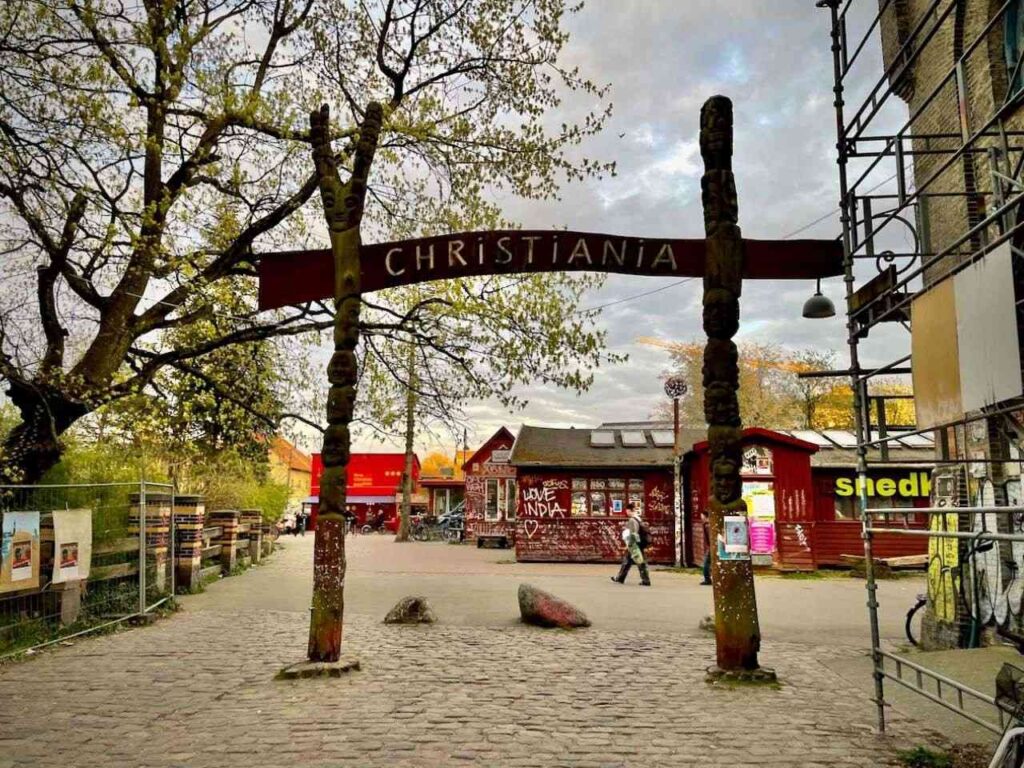
Tucked away in the heart of Copenhagen’s Christianshavn district, Freetown Christiania is a unique and self-proclaimed autonomous neighborhood unlike anywhere else in Denmark—or the world. Founded in 1971 by a group of squatters and free-thinkers who took over an abandoned military base, Christiania has since grown into a vibrant, creative, and often controversial community that embraces art, freedom, and an alternative lifestyle. It’s part urban village, part cultural experiment, and completely fascinating to explore.
🌟 Highlights of Christiania
• 🖌️ Street Art & Murals:
Christiania is a living canvas. Every corner, building, and fence is covered in expressive graffiti, psychedelic murals, and political art. It’s a visual celebration of freedom, creativity, and counterculture.
• 🏘️ Hand-Built Homes:
The houses here aren’t your average Danish architecture—many were hand-built by residents using recycled materials. Wandering the quieter paths of Christiania reveals colorful, whimsical, and sometimes surreal homes surrounded by lush nature.
• 🎭 Live Music & Culture:
Christiania has long been a cultural hotspot. Venues like Loppen and Jazzklubben host live music ranging from punk and reggae to experimental jazz. Outdoor performances, community events, and art installations happen regularly, especially in summer.
• ☕ Cozy Cafés & Eateries:
There are several locally run cafes, bars, and organic eateries in Christiania. Grab a vegan lunch, enjoy a fair-trade coffee, or sip a beer by the lake. The vibe is always laid-back and welcoming.
• 🚫 Pusher Street (with caution):
Christiania is known for its “Green Light District” where cannabis is sold openly on Pusher Street—despite being technically illegal in Denmark. Photography is not allowed here, and visitors are urged to be respectful and aware of their surroundings.
🚶 How to Get There
• By Public Transport:
Take the Metro (Line M1 or M2) to Christianshavn Station. From there, it’s a short 7–10 minute walk to the main entrance on Prinsessegade.
• On Foot:
If you’re exploring central Copenhagen, Christiania is walkable from Nyhavn and Christiansborg Palace—plan about 15–20 minutes.
• By Bike:
Like most of Copenhagen, Christiania is bike-accessible. You can ride through the main entrance and park your bike just outside the pedestrian-only zones.
🕒 Visitor Information
• Opening Hours:
Christiania is open to the public 24/7, but shops, cafes, and galleries usually operate between 10:00 AM – 10:00 PM. Evening hours are livelier but also more unpredictable.
• Admission:
✅ Free Entry – It’s a public space with no entrance fee.
• Tours Available:
Guided walking tours are sometimes available, often led by locals. These offer deeper insight into Christiania’s history, culture, and values.
💡 Travel Tips
• 📵 No Photos on Pusher Street:
This rule is strictly enforced. Signs will remind you not to take photos in certain areas. Always ask permission before photographing people or private spaces.
• 🌳 Respect the Residents:
Christiania is home to over 800 people. It’s not just a tourist attraction—so be courteous, avoid loud behavior, and stick to public paths.
• 🎒 Travel Light & Be Alert at Night:
While Christiania is generally safe, it’s best to visit during the day if you’re unfamiliar with the area. Leave valuables at your hotel and stay aware of your surroundings.
• 🌈 Explore Beyond the Main Streets:
The quieter back areas of Christiania are peaceful and green, with lakes, gardens, and wildlife. It’s worth the extra time to walk beyond the main square.
• 🍂 Great in All Seasons:
In summer, Christiania is buzzing with open-air events, live music, and lakeside relaxation. In autumn and winter, it becomes cozier and quieter, offering a different, more introspective vibe.
Freetown Christiania is not your typical Copenhagen attraction—it challenges norms, sparks conversation, and invites visitors into a world that values self-expression, sustainability, and community. While it may not appeal to everyone, it’s undeniably one of the most memorable and thought-provoking parts of the city. Whether you come for the art, the music, or just to see a different side of Denmark, Christiania offers an experience that’s raw, real, and unforgettable.
Louisiana Museum of Modern Art
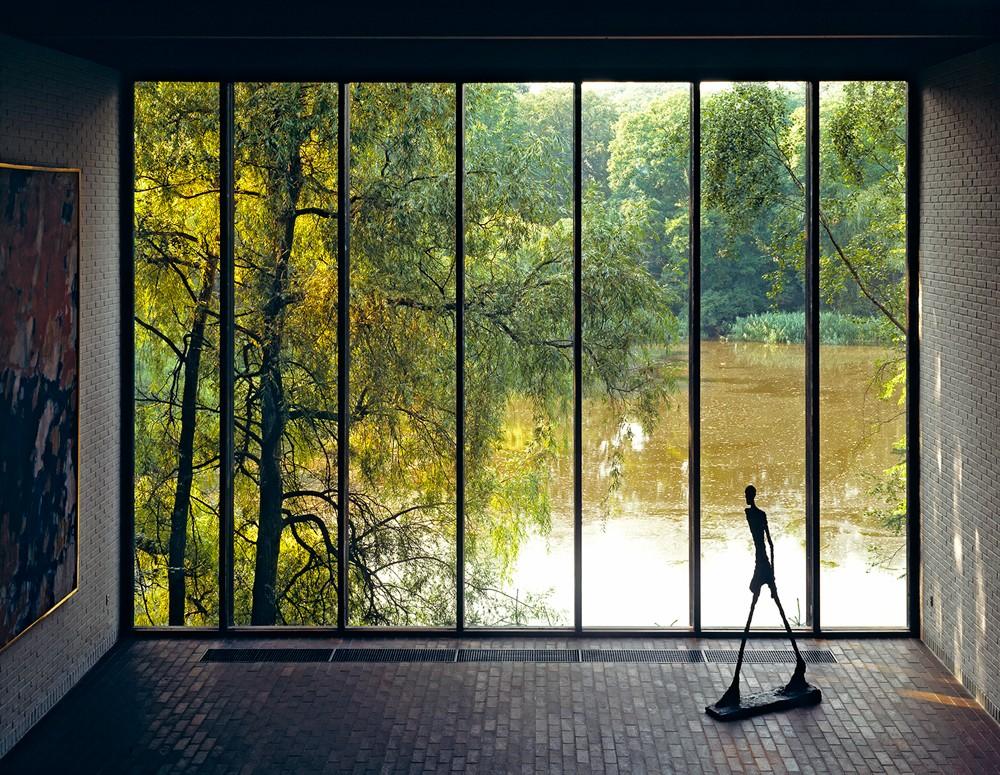
Located just 35 km north of Copenhagen in the scenic town of Humlebæk, the Louisiana Museum of Modern Art is one of Denmark’s most beloved cultural attractions. Set against the backdrop of the Øresund coast, this world-renowned museum seamlessly blends cutting-edge modern and contemporary art with nature, architecture, and a serene, almost meditative atmosphere. With its dynamic exhibitions, sculpture park, and panoramic sea views, the Louisiana Museum offers an unforgettable art experience that appeals to both casual visitors and dedicated art lovers.
🌟 Highlights of the Louisiana Museum
• 🖌️ Modern and Contemporary Art:
Louisiana houses an impressive permanent collection of 20th- and 21st-century art, including works by Pablo Picasso, Andy Warhol, Yayoi Kusama, Jean Dubuffet, and Alberto Giacometti. Its rotating exhibitions often feature major international artists and cutting-edge installations.
• 🌳 Sculpture Park by the Sea:
Wander through the museum’s sprawling garden filled with monumental sculptures by artists like Henry Moore, Alexander Calder, and Richard Serra. The park’s location along the coastline creates a perfect harmony between art and nature.
• 🌊 Stunning Sea Views:
Large glass walls and outdoor terraces provide sweeping views of the Øresund Strait. On a clear day, you can even spot the coast of Sweden across the water—an ideal backdrop for peaceful contemplation or a photo break.
• 🎭 Special Exhibitions:
Louisiana regularly hosts ambitious exhibitions that explore everything from architecture and photography to digital media and global culture. These exhibitions are known for their bold curation and interactive elements.
• 👨👩👧👦 Children’s Wing:
Perfect for families, the museum’s Børnehus (Children’s Wing) offers hands-on creative workshops and activities designed to introduce younger visitors to the world of modern art through play and imagination.
🚶 How to Get There
• By Train from Copenhagen:
Take a DSB train from Copenhagen Central Station or Østerport Station toward Helsingør. Get off at Humlebæk Station. From there, it’s a scenic 10-minute walk to the museum.
• By Car:
If you’re driving, there is on-site parking available. The trip from central Copenhagen takes around 40 minutes by car.
• By Bike:
For the adventurous, you can bike the coastal route to Louisiana. The path is long but beautiful, offering stunning views of the Danish countryside and coastline.
🕒 Visitor Information
• Opening Hours:
- Tuesday–Friday: 10:00 AM – 10:00 PM
- Saturday–Sunday: 11:00 AM – 6:00 PM
- Closed on Mondays
• Time to Explore:
Plan to spend at least 3–4 hours here to fully enjoy the indoor exhibitions, outdoor sculptures, and the café. Many visitors make a half- or full-day trip out of it.
💡 Travel Tips
• 📷 Bring a Camera:
Photography is allowed in most areas of the museum (except special exhibitions). The natural light, artwork, and sea views make for stunning shots.
• ☕ Stop by the Café:
The Louisiana Café is a destination in itself, offering fresh Danish food and panoramic views of the water. Try the smørrebrød and house-made pastries.
• 🎫 Buy Tickets Online:
To skip the line—especially in summer or during special exhibits—book your tickets in advance via the museum’s official website.
• 🎧 Download the App:
The Louisiana App offers guided tours, background stories, and updates about current exhibitions. It’s a great companion during your visit.
• 🌿 Dress Comfortably:
There’s a lot of walking indoors and outdoors, so wear comfortable shoes and bring a light jacket for the garden and seaside areas.
The Louisiana Museum of Modern Art is more than just a museum—it’s an immersive escape where art, nature, and architecture come together in perfect harmony. Whether you’re gazing at a Giacometti sculpture, wandering the sculpture park, or enjoying lunch with a sea view, Louisiana is an unforgettable highlight of any trip to Denmark. It’s worth the journey from Copenhagen and offers something enriching for every traveler—from art aficionados to families and serene seekers.
Final Thoughts
Copenhagen is a city that combines rich history, modern flair, and eco-conscious living in a unique and charming way. Whether you’re visiting the iconic Nyhavn, exploring the royal history at Amalienborg, or experiencing the local culture at Tivoli Gardens, Copenhagen offers a wealth of experiences for every traveler.
So, pack your bags and get ready to explore one of Europe’s most welcoming and picturesque cities. Copenhagen is waiting for you!

I’m Shreyash Mhashilkar — a full-stack developer by profession, and a passionate explorer of the future at heart.
With a strong foundation in both front-end and back-end , I spend my days building websites and applications that are not just functional, but scalable, intuitive, and user-focused.


